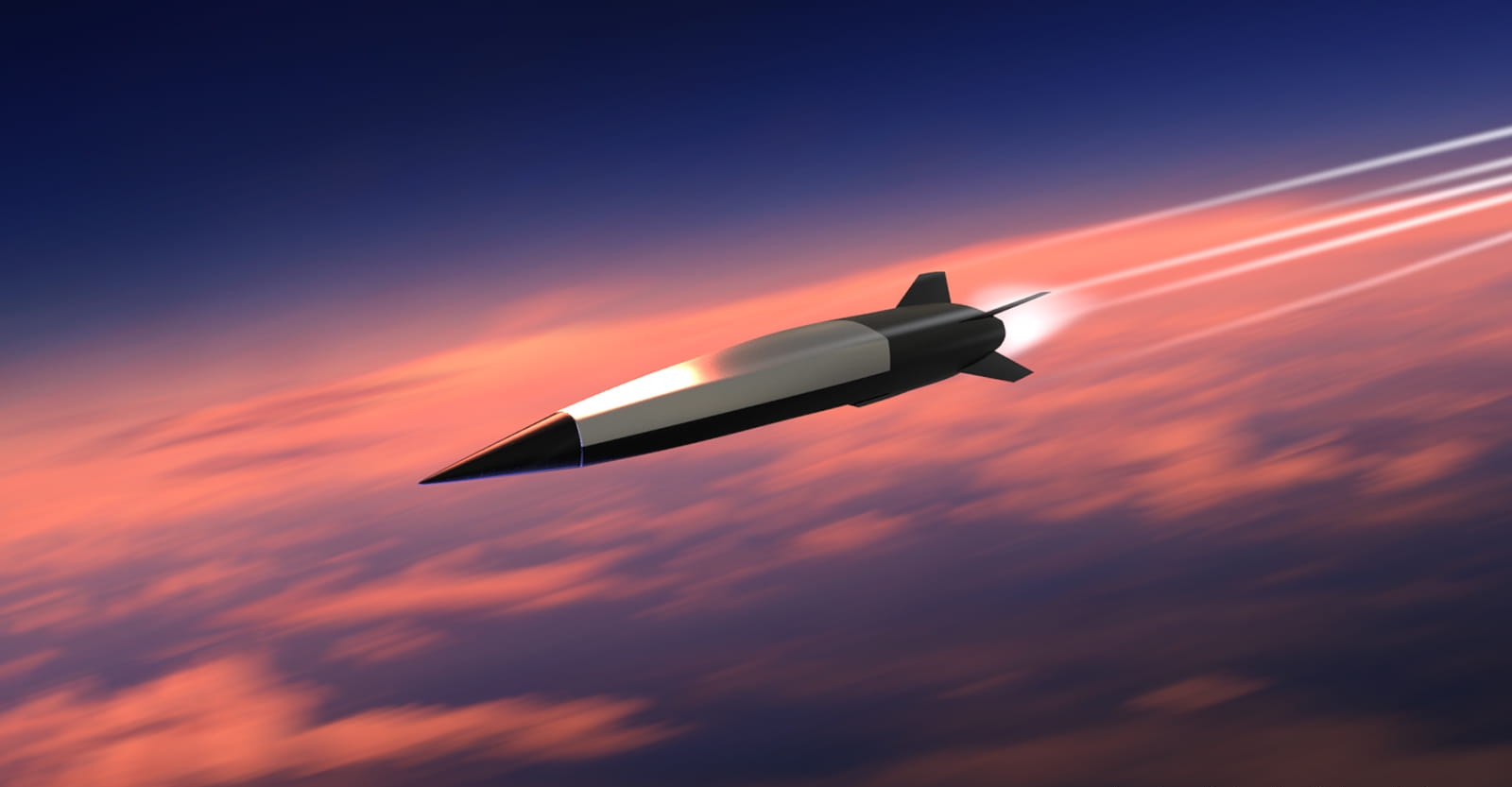The two primary categories of these new weapon weapons are hypersonic boost glide systems and propelled cruise missiles. Propelled cruise missiles are multistage rocket-driven vehicles that accelerate to a point at which a sustainer stage powered by a scramjet may take over and complete the mission. Hypersonic boost-glide systems work by accelerating a glide vehicle to hypersonic speeds over several stages, usually utilizing solid rockets, and subsequently, the vehicle then glides unpowered when completing its mission.
Global Developments In Hypersonics
Hypersonic strike weapons are in development for applications from short to intercontinental ranges. Reportedly, Russia has fielded an intercontinental-range system called Avangard, as well as Kinzhal, which is an air-launched ballistic missile. Russia is also developing Tsirkon, a ship-launched hypersonic system capable of attacking land and naval targets.
China has publicly displayed its medium-range DF-17 hypersonic boost-glide system, and reports of significant testing of its DF-ZF are widespread.
In the United States, development is underway for medium- and intermediate-range hypersonic strike weapons. These include the Conventional Prompt Strike (CPS), Long-Range Hypersonic Weapon (LRHW), AGM-183 Air-launched Rapid Response Weapon (ARRW) and Tactical Boost Glide (TBG).
At the cutting edge of hypersonic weaponry, offensive weapons will probably never stop evolving as a crucial component of the great-power rivalry, offering fast attack capabilities at long range.
Technological developments in the areas of propulsion, materials, sensors, warheads, aerodynamics, and component miniaturization will allow for the production of effective weapons at lower costs and smaller sizes, which will result in considerably bigger stockpiles.
Significant hypersonic defense capabilities are expected to develop concurrently with the introduction of offensive attack weapons, with the US utilizing the initial benefits of its worldwide ballistic missile defense systems.
It is anticipated that the first integrated defense systems will appear, offering efficient midcourse and terminal protection against hypersonic attacks. Affordability approaches should lead to smaller, more efficient interceptors and fully integrated non-kinetic capabilities in the future.
Missile Defense Architecture
The sensor architecture used in missile defense today is biased towards powerful surface-based radars. In the increasingly complicated air and missile threat environment of today, terrestrial systems have inherent limitations.
Terrestrial radars are limited in their ability to detect and track lower-flying threats like cruise missiles, which are concealed until they approach due to the earth’s curvature. They are scarce in comparison to their size and price.
They are also possible targets because of their fixed positions and energy outputs. In particular, cruise missile defense, hypersonic defense, and combating unmanned aerial systems (UASs) depend on extending the horizon.
Cruise missiles, in contrast to ballistic missiles, fly on unpredictable flight courses and at lower altitudes, often beyond the range of ground-based sensors. Airborne sensors can offer persistent coverage and are not constrained by spacecraft orbital mechanics, but they have smaller detection footprints and must be based somewhere.
Space-based sensors expand the engagement area by providing sensor coverage beyond the line of sight of terrestrial radars and by gazing out or down over topographical features that may mask cruise missiles or small UASs from vision.
Early detection, in turn, allows time for dispersal, hardening, or other sorts of passive defense, as well as increasing engagement time for active defenses.
Satellites in low, medium, geostationary, and extremely elliptical orbits are examples of traditional multi-orbit design. LEO constellations benefit from proliferation and economies of scale, but they have persistence and orbital longevity issues.
MEO constellations provide more coverage and persistence, although they may necessitate more expensive satellites with wider apertures. GEO and HEO orbits need fewer satellites to cover a specific pole or longitude, but they are far more costly. Space sensor constellations have the capacity to follow missiles from launch to final destination.
This “birth-to-death” monitoring capacity allows space sensors to constantly follow a moving threat, making them especially vital for countering hypersonic and maneuvering ballistic missiles. This also minimizes the requirement for many terrestrial sensors to be able to travel off the track, ensuring a consistent target track.
Space-Based Constellation By US
A space-based program in LEO for the detection and interception of hypersonic vehicles was recently announced by the Missile Defense Agency (MDA) and Space Development Agency (SDA) of the US.
Six satellites are part of the Joint National Security Mission (USSF-124) between MDA and SDA that is intended to track hypersonic weapons. Four of these satellites are L3Harris-made missile tracking sensors for the tracking Layer constellation of the SDA.

The Hypersonic and Ballistic Tracking Space Sensor (HBTSS) program of MDA consists of other two satellites, one of which was manufactured by L3Harris and the other by Northrop Grumman.
The goal of the Tracking Layer constellation is to create a worldwide network of sensors that will act as a barrier against ballistic and hypersonic missiles from China and Russia.
The HBTSS contains sensors intended to keep high-fidelity tracks of the threats and transmit the information to interceptor missiles that would try to bring them down, whilst SDA’s satellites are used to detect hypersonic threats.
To be able to intercept hypersonic missiles, HBTSS is to integrate fire control data precisely enough to guide an interceptor to shoot down the incoming missile. While infrared and electro-optical detection technologies are established, hypersonic missile tracking is significantly more challenging than typical ballistic missile warning.
Distinguishing a hypersonic heat signature from the Earth’s background has been compared to monitoring a slightly brighter signature in an ocean of signatures, needing significant testing and modeling to confirm.
No comments:
Post a Comment